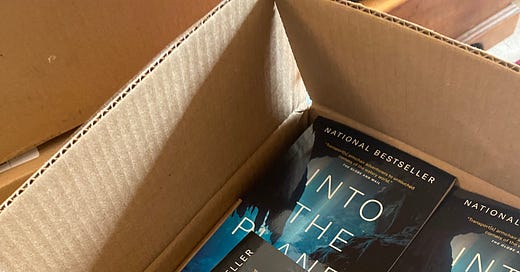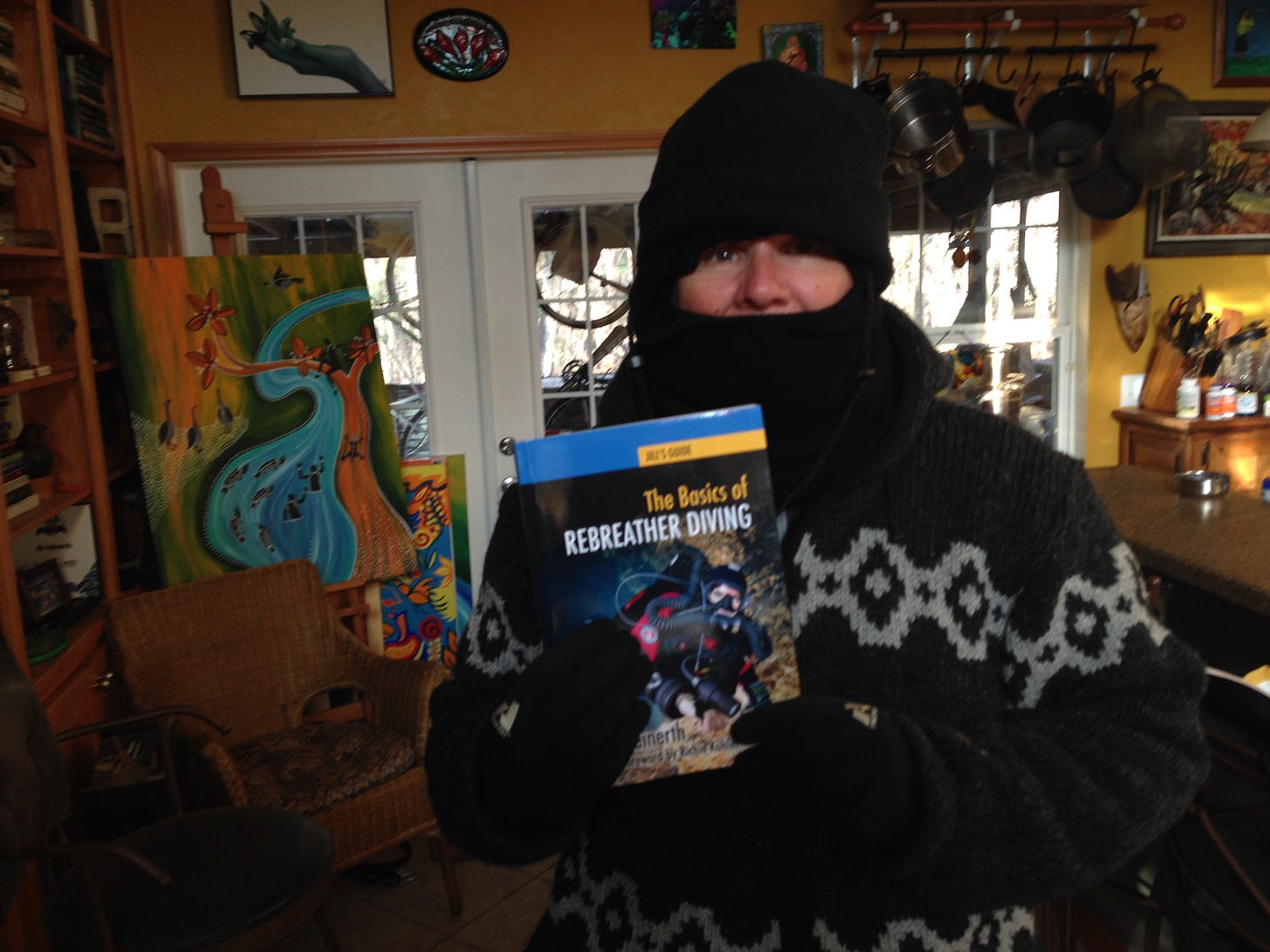You Have a Book in You
SELF-PUBLISHING: A Guide to Getting Your Book Out There
We all have a book in us, but navigating the methods of publication can be
daunting. Here are a few tips for getting your book inot the world.
Working with a platform like Amazon’s KDP Direct can be both easy and rewarding. With this route,
you can either prepare your manuscript, including photos, and upload it as
a ready-to-go PDF, or you can seek help with formatting before uploading
your source material. Once everything is finalized and any coding errors
are resolved, you can launch your book on Amazon and start selling
globally. The best part? The books are printed on demand (or sold as e-
books), ensuring quick delivery to customers around the world. For Amazon
Prime members, free shipping is also available. This type of publishing is
both environmentally sensitive and also allows you to upload a new PDF if
you find errors that were missed in proofreading.
A major advantage of this system is international shipping. Traditionally,
shipping costs can far exceed the price of the book itself, especially for
international orders. With KDP, books are printed regionally, so if a
customer in Australia orders your book, it is printed and shipped within
Australia, keeping costs low. You set your book's price and therefore
control your royalties. While Amazon takes a cut, they effectively serve as
your international storefront—a valuable service that opens global reach.
Additionally, you can purchase wholesale copies at a reasonable price to
sell directly at events, offering a more personal touch with autographs or
personalized notes. The only downside is that photo quality might not
match that of a high-end coffee table book, but the print quality is still
commendable. All my technical diving manuals are printed and sold
through this method—complete with color pages and bleeds (images and
cover art that prints right to the paper’s edge).
When you set up international sales, you'll receive monthly deposits directly
into your bank account from every country where your book is sold. So, on
the first of the month, you might see deposits from Amazon Brazil, Italy, and
beyond.
However, marketing remains crucial. On a platform as vast as Amazon,
your book can easily get lost in the noise. It’s up to you to drive attention
through your existing network and fanbase. You can also create wholesale
opportunities or discount coupons for resellers—just be sure to leave
enough profit margin for them to be incentivized to promote your book.
This route works well if you're willing to put in the effort. If you already have
a dedicated “tribe” of followers, you're halfway there.
TRADITIONAL PUBLISHING: The Major Publisher Route
Pursuing the traditional publishing route begins with finding a literary agent,
a task that can be incredibly challenging. A reputable agent with strong
industry connections is essential, but most agents don’t accept referrals,
even from their existing clients. For instance, I’m unable to connect you
with my agent—when he’s seeking new projects, he’ll reach out to me. In
fact, he found me, not the other way around.
The first step with your new agent is agreeing on their commission, typically
around 15% of your advance and future royalties. A good agent will not
charge any fees beyond commission—they believe in your work and know
how to sell it. They will handle all legal work with publishers and strive to
secure the best possible deal for you.
Your agent will also guide you through the proposal process. Major
publishers won’t look at finished books or unsolicited manuscripts. Instead,
they expect a detailed proposal, including proof that you have a substantial
platform for promoting your book. While the publisher can help get your
book out into the world, they still expect you to handle a lot of the marketing
and promotional events, often at your own expense. They might fund a
brief book tour, but after that, it’s back to you. The benefit is that the
publisher works behind the scenes to secure favorable placement in stores,
but they need to see a clear potential for sales before they take you on.
When an agent represents you, their goal is to secure the highest advance
possible. But remember, you won’t earn additional money until your
advance is “earned out” through sales. Most books never reach that
milestone. My memoir has sold very well internationally, but hasn’t yet
earned royalties beyond the original advance, despite being considered
very successful.
Once accepted by a publisher, you'll work with an in-house editor to refine
your manuscript or even rewrite it completely. This process can take a year
or more. After editing, a marketing plan is developed while fact-checkers
and grammar editors go over your manuscript. Even after the final galley is
ready and mailed out to wholesalers, you might wait another year for the
book to hit the shelves. Publishers carefully plan launch windows to give
your book the best chance for success, but it could be many months or
even years before it is officially released. A publisher will know the right
day, week or season for the best potential.
That’s one reason self-publishing can be so appealing—you control the
timeline and can release your book much sooner. Both routes can be
lucrative, but either way, you’ll be responsible for most of the marketing,
presentations, and events. Royalties from traditional publishers can be as
low as 2-7%, depending on various factors. Just imagine making about a
dollar per book if you reach that stage. With self publishing, there will be no
advance, but you can set your own profit.
LAUNCH STRATEGIES
If you opt for self-publishing, focus on building momentum for your launch
day well in advance. Pre-orders are essential to creating a spike in first-day
sales, which can help propel your book to bestseller status, even if only for
a brief moment.
In both self-publishing and traditional publishing, you can buy your book
wholesale and sell it directly at events to maximize your profit margin.
However, if you purchase wholesale copies from a major publisher, those
sales don’t count toward the "scans" that contribute to earning royalties.
Only books sold through traditional retail channels and scanned at
checkout count toward that threshold.
BESPOKE PUBLISHERS
Another option is finding a small, niche publisher, perhaps one that
specializes in your field. While they might help with some aspects of the
process, they usually don’t offer advances. Instead, they provide a
percentage of each book sold, which can be beneficial for more specialized
markets.
Be extremely careful with contracts from small publishers. Never sign away
your rights or agree to co-own your story. Retain all your creative rights,
including the ability to option your work for future media formats, such as
film or digital adaptations. Make sure to have a lawyer review the contract
to protect your intellectual property.
FINAL THOUGHTS
Navigating the publishing world is not easy, but in the absence of a strong
literary agent, I highly recommend self-publishing through platforms like
KDP Direct. Although printing large batches of books overseas may seem
tempting, shipping costs can quickly add up, especially for international
orders. The shipping costs will be substantial to get to you and substantial
every time you ship to a customer. If you go that route, choose a format
that fits within standard mailing dimensions, and be sure to account for
shipping and packaging costs before committing to a print run.
Above all, never send unsolicited materials to publishers. A good agent will
always be your best ally, helping you avoid potential pitfalls and securing a
better deal than you could on your own. But if you are feeling independent,
you can get your work into the world in relatively short order.
Jill’s Amazon author page is here
Here’s a podcast!
In last week’s newsletter Jill shared a bit about the new artificial intelligent tool being developed called “Maestro Jill”. With this audio podcast with Robert, Jill plays some early examples of what AI Jill sounds like, and explains its potential as an educational asset.
Robert’s Amazon author page is here
Happy Thanksgiving! Yes, we observe Thanksgiving in October in Canada. Here’s our unofficial ambassador BrittleStar to explain:






